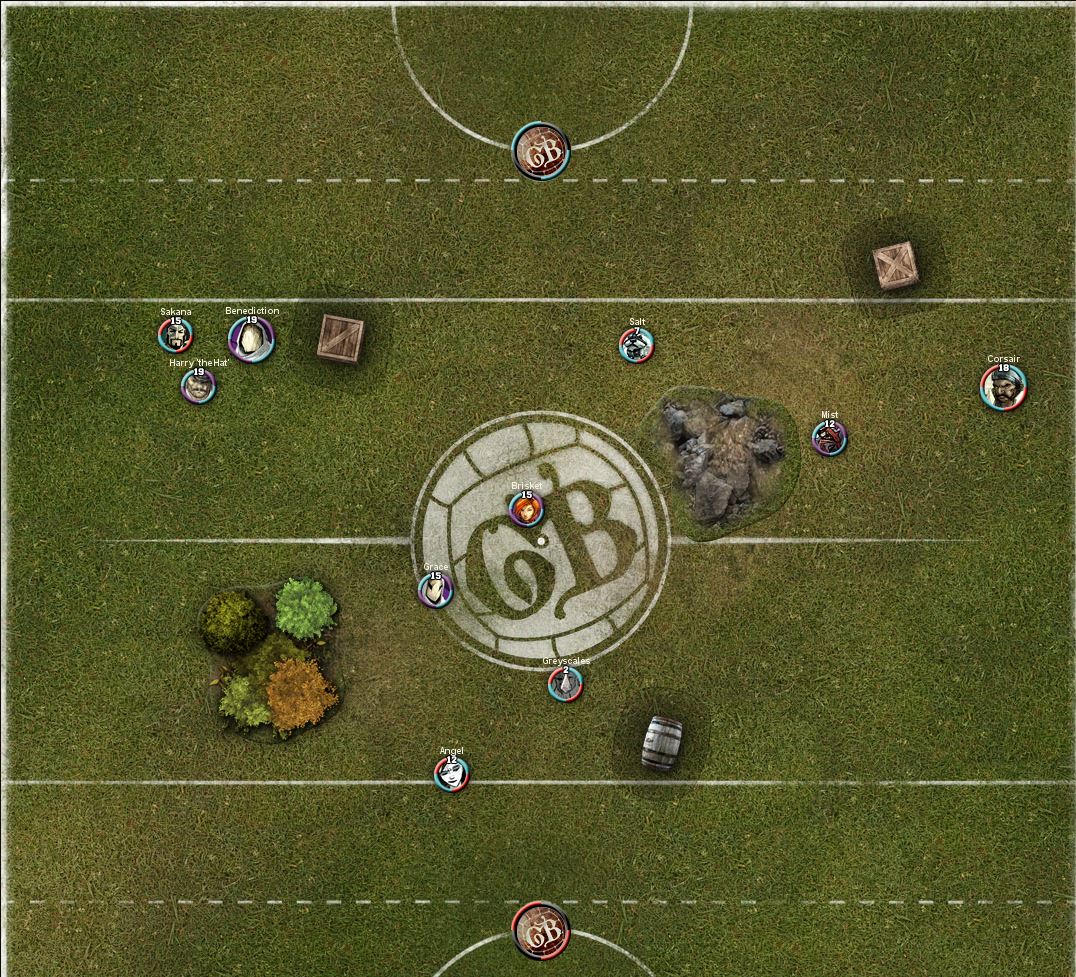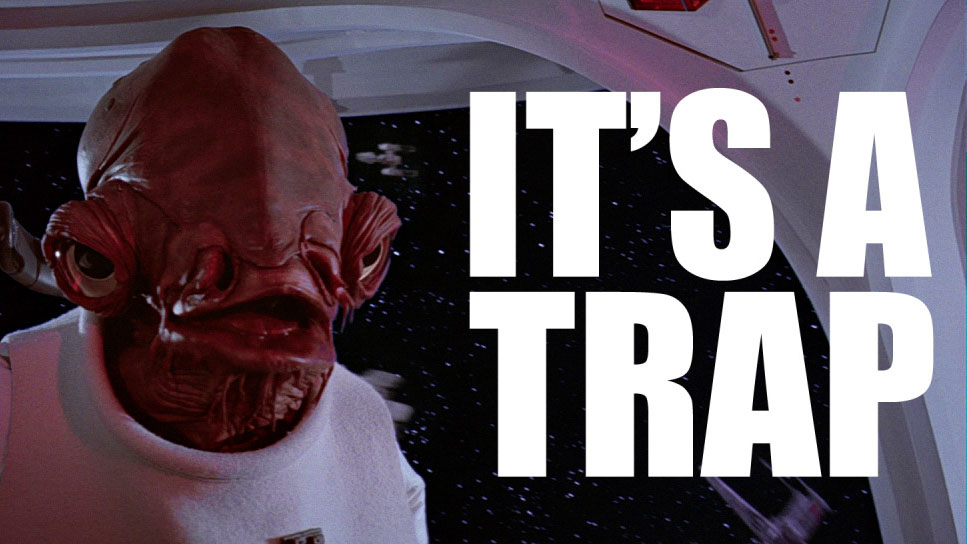I’m back with the blog for Season 4!
In this little series, I want to provide a primer for people looking
to get into the game (and maybe an intermediate player can get some
mileage out of it, too).
The Season 4 Bootcamp will try to give you a basic understanding of
the tactics and strategy of Guild Ball. When you start to read on these
articles, you should have a firm grasp of the rules. I will also not
provide full rules text on the abilities of Models, but I will provide
example models who posess these rules so you can look up the exact text
in the app or on the card.
So, let’s dive into the first topic, the five resources of Guild
Ball, that being Influence, Momentum, the Ball, Clock and conceded VP.
Influence
The most obivious of the resources, Influence, is what makes your
Players do actions on the Pitch. Each model’s actions are limited by the
Influence cap and they provide a certain amount of Influence to the
Pool. Goals give you another influence and Game Plan Cards can give you a
temporary boost to your influence.
Managing your influence is something that needs a lot of practice and
experience. It’s a obviously a vital part to the game since it
dictates what you can do during a given turn, but there is not a clear
cut answer to how to distribute it. Often times, you will fully load
models that are attacking the opponent and give enough influence to your
buffing models to get the buffs going.
Then we have the concept of invalidating influence. Since influence
is a limited resource each turn, if you can manage to get influence off
the table somehow, you just reduced the amount of actions your opponent
can do. Invalidating influence can be done by taking out a model with
influence on, Disengaging through a counter-attack, or controlling a
model in a way that it can’t reach you (through distance, conditions or
plays like Goad from Marbles)
Momentum
Momentum is generated by using up your influence to make momentous
attacks, passes or Take outs. Momentum is the second obvious resource
and is very important. First of all, it determines initiative each turn.
Having more momentum on your opponent often lets you go first in the
following turn, depending a bit on the game plan cards(You can guarantee
initiattive if the difference of momentum plus the initiative value of
your card equals 8). That doesn’t mean you should just bunker every
point of momentum you get.
Healing your players is very important and sometimes you just need to
get those conditions off. Dodging after passing can open up vectors and
Defensive Stance/Counter Attacks can throw a wrench into your
opponent’s plans.
Sometimes, Momentum can grant you “free” actions that you don’t have
to pay influence for. Let’s look at the example of Counter-Attacks. Many
people use counter-attacks just to disengage or threaten a disengage
through dodges and pushes. While this certainly is a use, sometimes
character plays triggered through the playbook have value, too. Mallet,
for example, can trigger Singled out on the counter attack and then
suddenly all the models have +2 TAC on your attacker, without mallet
using any influence or needing to activate! I’m sure you’ll find other
examples of counter-attacks that might not be good at disengaging, but
certainly have other value.
The Ball
The Ball is a little special as a resource. Only one player can have
it and controlling the Ball is a central part of the game. Having the
Ball allows you to pass it for dodges, cash it in for 4 VP and a goal
influence. A take-out focused team will often try to hold the ball away
from you(killing the ball, not to be confused with the same named
character play of Cinder) and use it to score the final 4 points.
To see how massive of a difference the ball can make, I constructed a little example:

The Score is 8 – 6 in favour of the Fishermen. It’s the Order player’s turn
Case 1: Grace has the Ball
If Grace has the ball, she can get around the Unpredictable movement
of Greyscales by passing the Ball to Brisket. If she then manages to
deal 2 damage to him, the score will be 8 – 8 and Brisket is in a very
good position to score and close out the game. I would argue that the
game is very much in the Order’s favour here.
Case 2: Greyscales has the Ball
If Greyscales has the Ball here, the Brisket player must somehow try
to secure the ball. Mist or Brisket have to do it, but most likely will
have to use Acrobatic on Mist or Route one on Brisket to get around the
Umpredictable Movement and then the counter attack of Greyscales might
even thwart that plan. While still winnable for the Order, the Fish are
in a much stronger position than in case 1.
Clock
While not a part of the core rules, Clock is an integral part of
tournament games and if you want to go to tournaments (and you should at
least try once, they are fun! ) you should learn that the clock is an
asset and a weapon.
Both you and your opponent get the same time (45 minutes + the 1
minute activations) to play your game. There is a simple goal here:
Don’t clock yourself (first). If you clock yourself you get two
disadvantages: You activations only last one minute (even bis ones) and
every activation grants a VP to your opponent (even small ones). You can
maybe get through 5 activations in 2 minutes, but your captain takes 1
minute and 15 seconds, that is fine as long as you are not clocked, but
after clocking, this is bad.
If you have a clock advantage, it’s good to press it with fast
activations. Take your time for the important ones, but if you have an
empty mascot, don’t try to put it at the perfect spot. An activation
that is “good enough” but doesn’t give your opponent time to think is
better here.
Also, think while your opponent is doing things. It’s “free” thinking time for you.
Don’t be shy to take a longer activation if it’s important. Confirm
everything with your opponent and do that activation as perfectly as
possible.
And the last thing, even when you are down on clock, as long as you
get your 12 points before (or as) the clock hits 0, it’s still good time
management.
VP Conceded
So this one seems weird at first, but bear with me. If you played
Magic, you know that Magic players use their healthpoints as a resource.
It doesn’t matter if you win a Magic game with 20 or 1 HP left.
Now, let’s flip our viewpoint of VP around. Let’s say you start with
12 Health, a Goal deals 4 Damage to you and a Takout 2. Sounds similar?
Because it is.
The goal of Guild Ball is not to prevent your opponent from making
VP, but to get to 12 VP faster than him. Trying to deny every single VP
will result in you losing slower, but still losing. Of course, you don’t
want to give out easy VP, but sometimes it’s better to let something
happen.
Let’s have some examples:It’s 0 – 0, you have initiative and are
facing a goalrun from Vitriol, but you could just let the goal happen
and take out Smoke with 6 influence on her. Taking out Smoke let’s you
invalidate influence, get activation advantage and 2 VP, for giving up 4
VP (if the Alchemist cashes in and also gives you control of the Ball).
a pretty obvious example.
On the other hand, let’s say it’s 4 – 4 and you are now in the shoes
of the Alchemist player and have initiative. Now you cunningly let Smoke
have no Influence and take the goal, putting the score at 8 – 4. After
Smoke gets taken out, it’s 8 – 6 and you just need one more goal to win.
A worthwile trade in my opinion.
This is why being at 8 points is such a strong position in the game,
because your opponent can’t afford to trade VP for board position
anymore. Recognizing spots where you can give up some VP for a better
position later will surely let you win more games.




